
 Home
Home
 Updater
Updater
 Me
Me
 Living
Living
 Sport
Sport
 Work
Work
 Contact
Contact
 Germar's Monthly Updater
Germar's Monthly Updater
|
Four-National-Parks-Tour
Day 8 On day 8, we explored Sequoia National Park. First, we visited the General Sherman Tree, which is said to be the heaviest living thing on earth. There are taller redwoods in Northern California, and there are more widespread organisms like fungi webs, which may cover several acres. But there is nothing that is more massive than this tree (The tree was too big to make a decent photograph, so you won't find one below). From there, we went back to Moro Rock and climbed it halfway up to see the difference between day light and the atmosphere during sunset. We had a crystal blue sky, a perfect view on "Castle Rocks" to the South-East ...
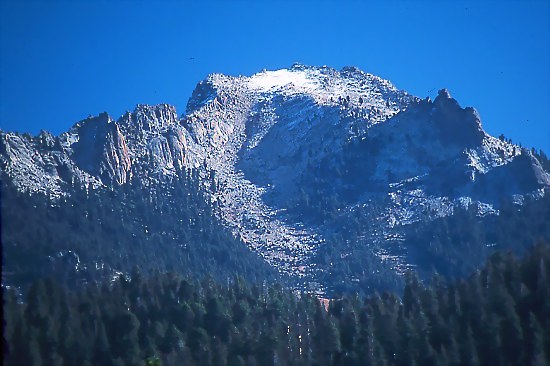
... and Sequoia treetops at eye-level.
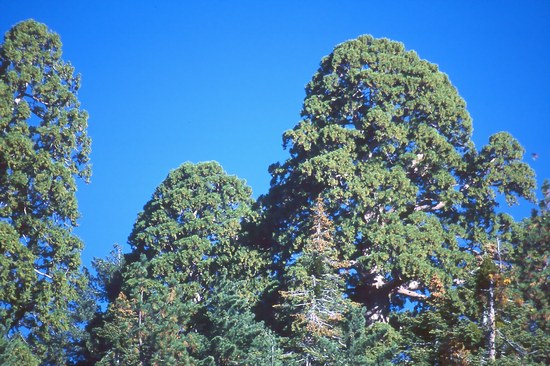
From the foot of Moro Rock, we followed a trail that went deep into a grove filled with awesome Sequioas. The trees are quite fire resistant; all old trees have scars from many fires they were suffering during the many centuries of their lives. In fact, fire is crucial for their survival. Fire creates openings in the forest canopy through which sunlight can reach the forest floor. In addition, the ashes from fires serve as fertilizer, and fire sterilizes the soil, killing insects and fungi. But most important, the heat of fires causes sequoia cones to dry out and scatter seeds onto the forest floor. So after fires, many seeds are available and young seedlings don't have to compete with other plant life. Sequoias can therefore often be found in groups, like the one below. (By the way, I am also in the photograph, but you have to look closely!)
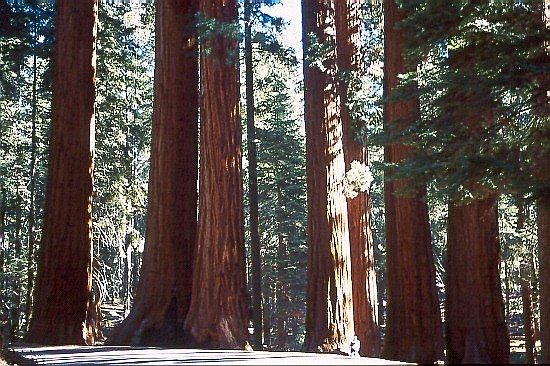
Farther inside the grove was an old toppled Sequoia, the "Tunnel Log", one of view trees where you can drive through a car (Our motor home was unfortunately too large). Toppling, by the way, is the primary reason for sequoias to meet their end. Sequoias keep growing during their entire lifetime. After about 3000 years or so, they become too heavy for their shallow root system (most roots are growing no deeper than two meters below the surface), and topple. We found a toppled tree with a sign next to it saying: "Fell without warning June 3, 1955. The weather was clear with no wind". So there is always a risk standing next to a Sequoia. They can fall any minute!
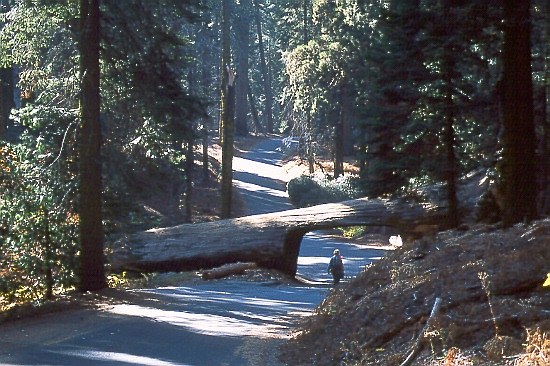
After a while the forest became clearer and we stood at the border of Crescent Meadow, a beautiful glade in the middle of the Sequoia grove. I walked along the border of the meadow with my mom following some 50 feet behind me until I suddenly heard her screaming at highest pitch. I turned around and saw a bear only 20 feet away from my mom who by then was petrified with horror. The scream chased the bear away. Fortunately, I was still conscious enough to capture the beast on film (in fact, it was quite cute).
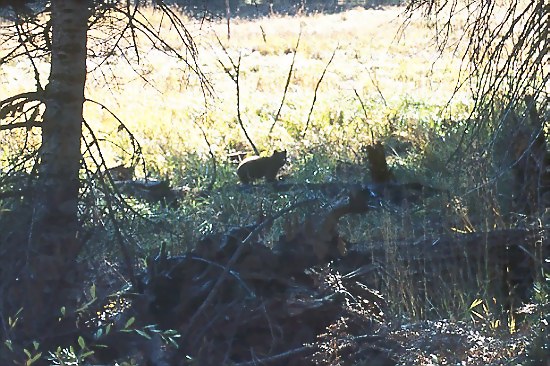
After we had overcome the shock, we continued walking on the trail, and eventually found an old hut at the end of the meadow, built inside the trunk of an even older fallen Sequoia. It's called "Tharp Log", named after Hale Tharp who lived in the rustic cabin each summer from 1861 until 1890, and used the nearby meadow as range for this cattle. He died in 1912, 84 years old. So living for a while in a 3000 year old trunk seems to be a good trick if you want to get old.
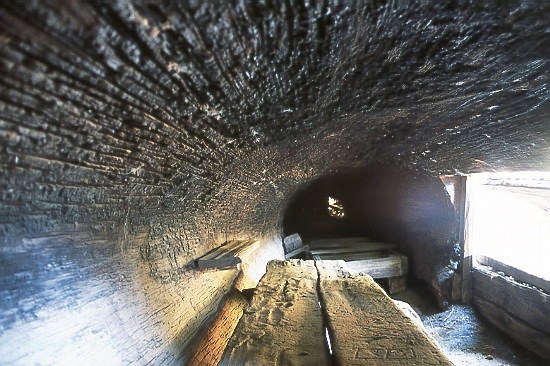
We chose to walk back at the other side of the meadow where we thought bear encounter is less likely (I wouldn't have mind, though, to see a second one). We met the "High Sierra Trail", which leads from Moro Rock to the Kern River, and followed it for a while. We turned back at "Eagles View", a gorgeous vantage point, from which we could see the crest of the Great Western Divide. East of the ridge is Mount Whitney. With an altitude of 4418 meter, it is the highest point of the contiguous U.S.
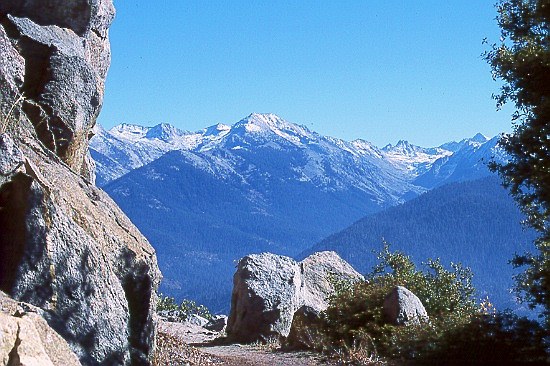
We finally left the grove at a time of the day when the sun was mystically flooding the forest. It looked like as if Robin Hood could show up any time.
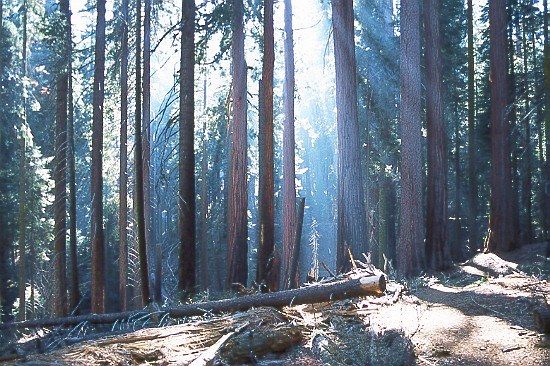
By then, it was already late in the day and we decided to drive to Kings Canyon National Park, which is adjacent to Sequoia National Park to the North (in fact, both parks are administered together). We stopped at the road to watch the sunset, looking down on "Redwood Mountain Grove" the largest contiguous Sequoia grove in the world.
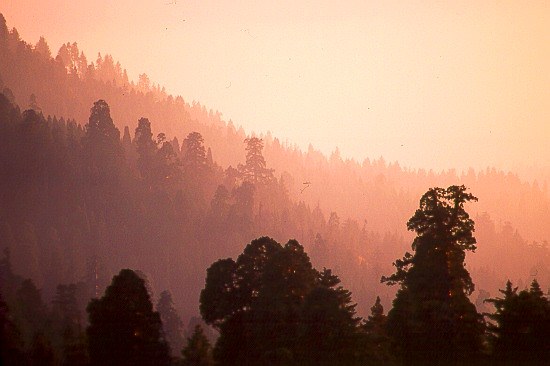
Before we checked in for the night at Azalea campground, we bought some Sequoia seedlings at a souvenir shop. So maybe in 2000 year, a 100-meter tall tree will be standing in Garmisch-Partenkichen, and biologists will have a hard time explaining the riddle of its origin. We chose our campsite next to a tiny Sequoia (at least tiny for Sequoias). My mom woke up at night, looked out of the window, and was a bit shocked of the "threatening wall". Still half-asleep, she did not remember that we parked next to a tree that covered the whole window.

| |||||||
|
< Previous Day | Tour Map | Next Day > Return to: Updates from 2001 | Current Updater
Last updated: 23 January 2016
|
|||||||